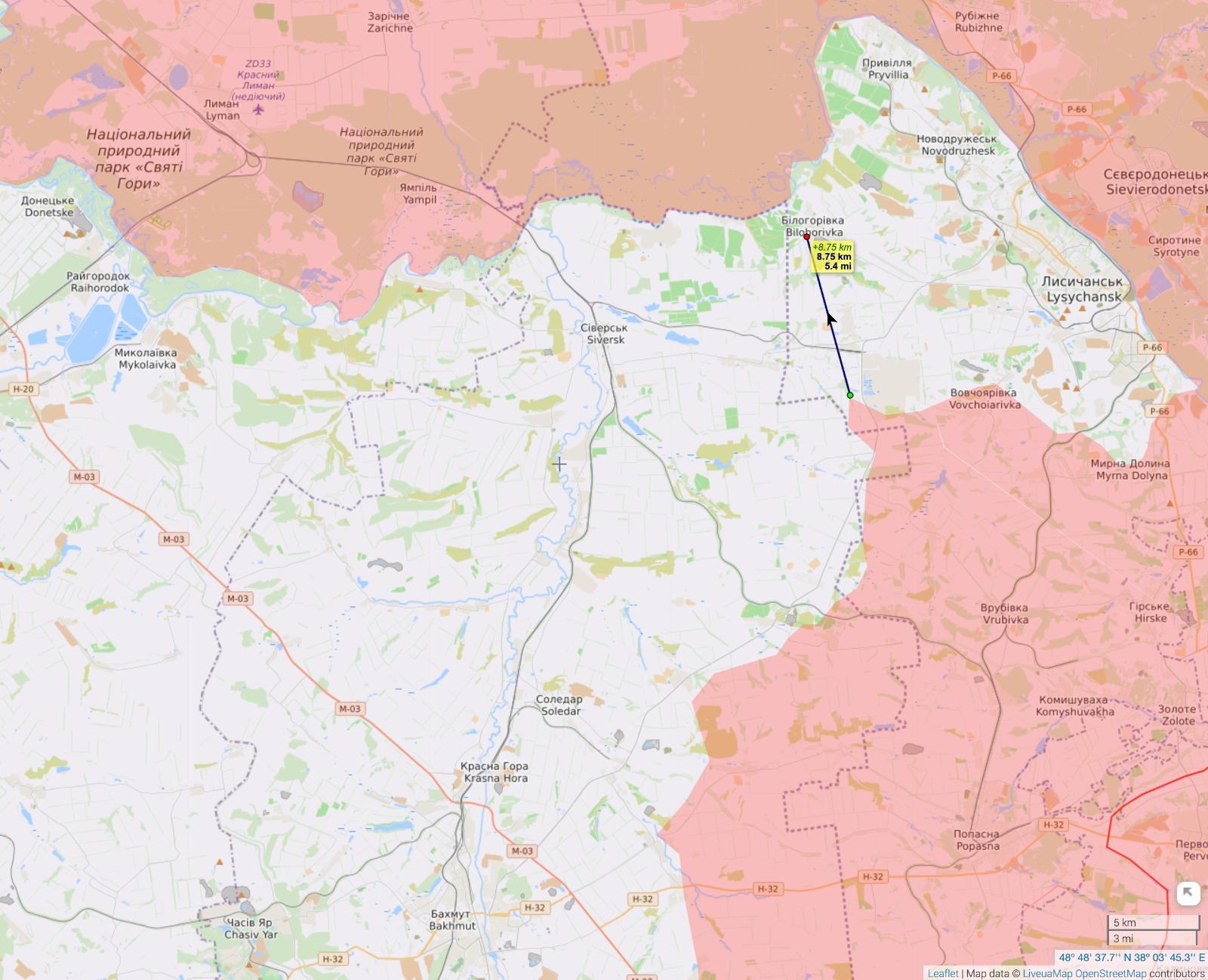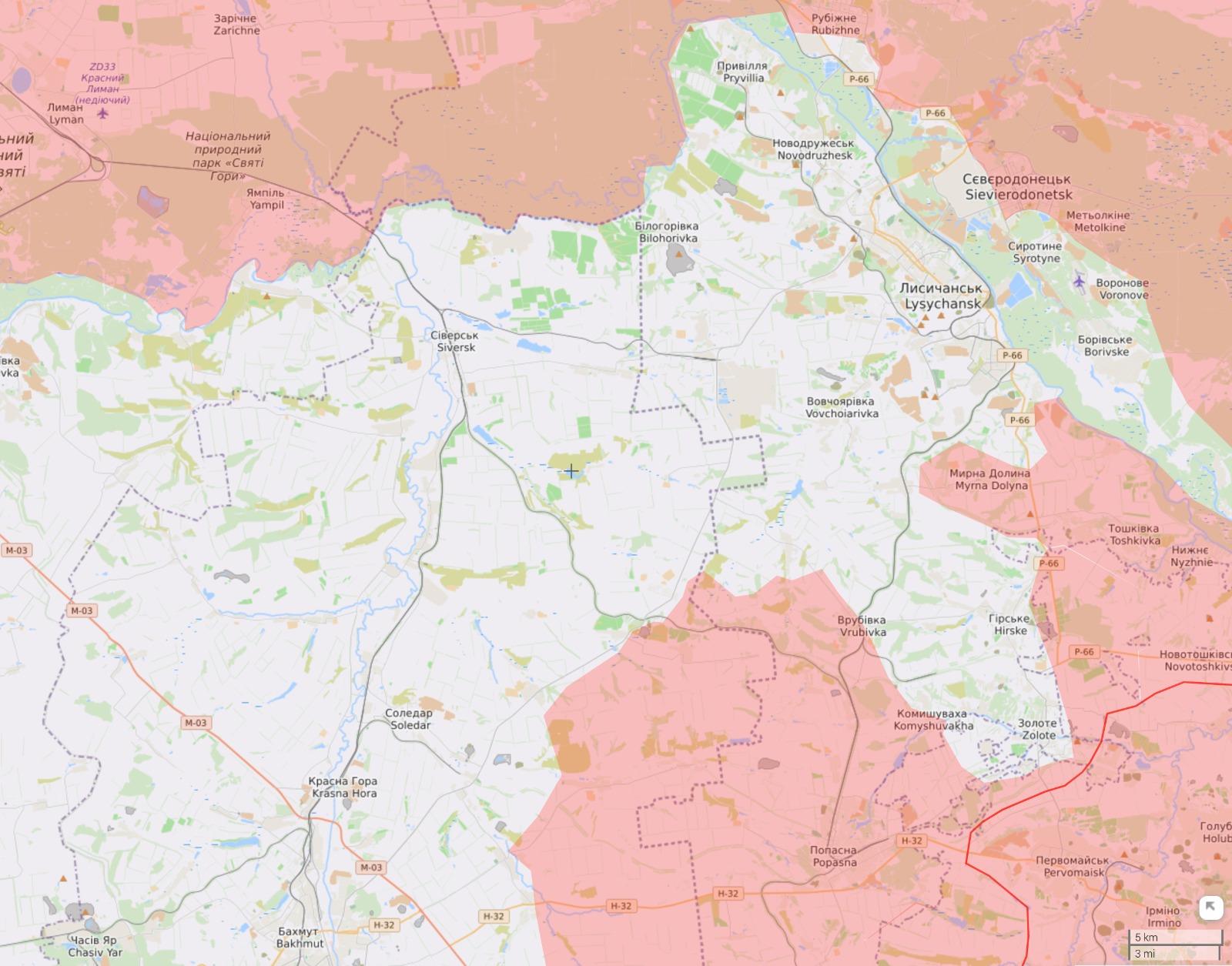(MENAFN- Asia Times) Summary/overview
On July 3, Russia's Ministry of Defense announced that Russian forces (and the“People's militia of the Lugansk People's Republic”) had established full control over the city of Lysychansk and a number of nearby settlements, the largest of which are Novodruzhesk to the northeast and Maloriazantseve on the southeast side of Lysychansk.
After initially denying the fall of Lysychansk, the Ukrainian General Staff (UGS) confirmed the news within hours of the Russian announcement.
The issue was settled rapidly. On July 1 evening, Russian forces moved in force on Lysychansk from the northeast and southwest and reached the city center by mid-day July 2. By mid-day July 3, the 180 square-kilometers area from the Donets River to the line of Bilohorivka in the north to the vicinity of Verkhnokamianka due south indicated in our map of June 30 (and roughly coincident with the Luhansk – Donetsk oblasts border) had been occupied and cleared of Ukrainian forces.

June 30 map with our predicted line

The current map, as we had predicted

Where they came from: the June 23 map
In its evening report of July 4, the UGS reports that“Russian forces are pushing the Ukrainian military to the Siversk-Fedorivka-Bakhmut line.”
The town of Siversk is regarded by analysts as the next Russian target. We regard another pincer move from the Popasna region north and the Lyman region south as equally likely.
According to the Russian Ministry of Defense, air defense systems have intercepted eight multiple rocket launcher systems' (MLRS) shells, including four rockets from the US HIMARS multiple launch rocket system in the Stakhanov region of the Luhansk oblast. This report is unconfirmed by independent sources, but it might indicate that the first HIMARS systems have arrived near front lines.
There is a substantial increase in Russian artillery fire in the Kharkiv region. More likely than not, this is an attempt to tie down Ukrainian forces in the area. We expect the next major Russian move will take place in the south, in the Zaporizhzhia and Mykolaiv regions.
Assessment The rapid Russian victory at Lysychansk and the substantial territorial gains within little more than 48 hours have surprised most observers.
Why be surprised? The Russian offensive in the eastern parts of the Donbas salient commenced in late May after the victory in the battle of Rubizhne.
The direct Russian ground assault on Severodonetsk, the administrative center of Luhansk oblast started on May 27. At the time, the city had not been encircled and attack proved a hard slog.
Key to the Russian capture of Severodonetsk a month later on June 24 proved two flanking maneuvers and patience and trust in Russian literally age-old tactics of overwhelming artillery fire, even direct fire as practiced in World War II.
The flanking maneuvers were 1) the surprise move into the Popasna region and the move into Lyman which allowed very substantial disruption of Ukrainian supply lines and 2) the systematic closing of two sub-salients of the Donbas main salient in the Hirske-Zolote and then the Borivske direction.
Not only did these Russian moves isolate Severodonetsk, they also prepared the attack on Lysychansk and in the process led to the elimination of at least 2000 Ukrainian troops from the battlefields.
On June 22, the UGS said they had lost control of the settlements of Toshkivka and Myrna Dolyna south of Lysychansk. On June 23, Russian forces cut off and surrounded the towns of Hirske and Zolote and captured them by the next day.
On June 24, Ukrainian Luhansk Governor Haidai announced that Ukrainian forces were ordered to withdraw from the city of Severodonetsk.
On June 25, Russian forces took full control of the city.
But as noted, this was a month-long war of attrition.
By contrast, the battle of Lysychansk and capture by Russian forces of surrounding territory took less than a week.
The issue going forward is qualified manpower, indeed, manpower, period.
In a war of attrition, other things being equal, the side with the larger manpower reserves wins.
Continual claims by Ukrainian President Zelensky, by other Ukrainian officials and by US and NATO officials that it's weapons systems that matter – more HIMARS, more howitzers, more tanks – are, militarily speaking, nonsense talk. In fact, worse than that: they're cover-up for expected failure and incompetent net assessment.
We commend to readers a competent piece of writing by a former US Marine Colonel and trainer of Ukrainian forces entitled,“Timing is Not on Kyiv's Side.” It's as scary as it is sad and should be read everywhere from the White House to the bunkers at Mons. The publisher is the Modern War Institute at West Point, the US Military Academy.
MENAFN04072022000159011032ID1104476845
Legal Disclaimer:
MENAFN provides the information “as is” without warranty of any kind. We do not accept any responsibility or liability for the accuracy, content, images, videos, licenses, completeness, legality, or reliability of the information contained in this article. If you have any complaints or copyright issues related to this article, kindly contact the provider above.